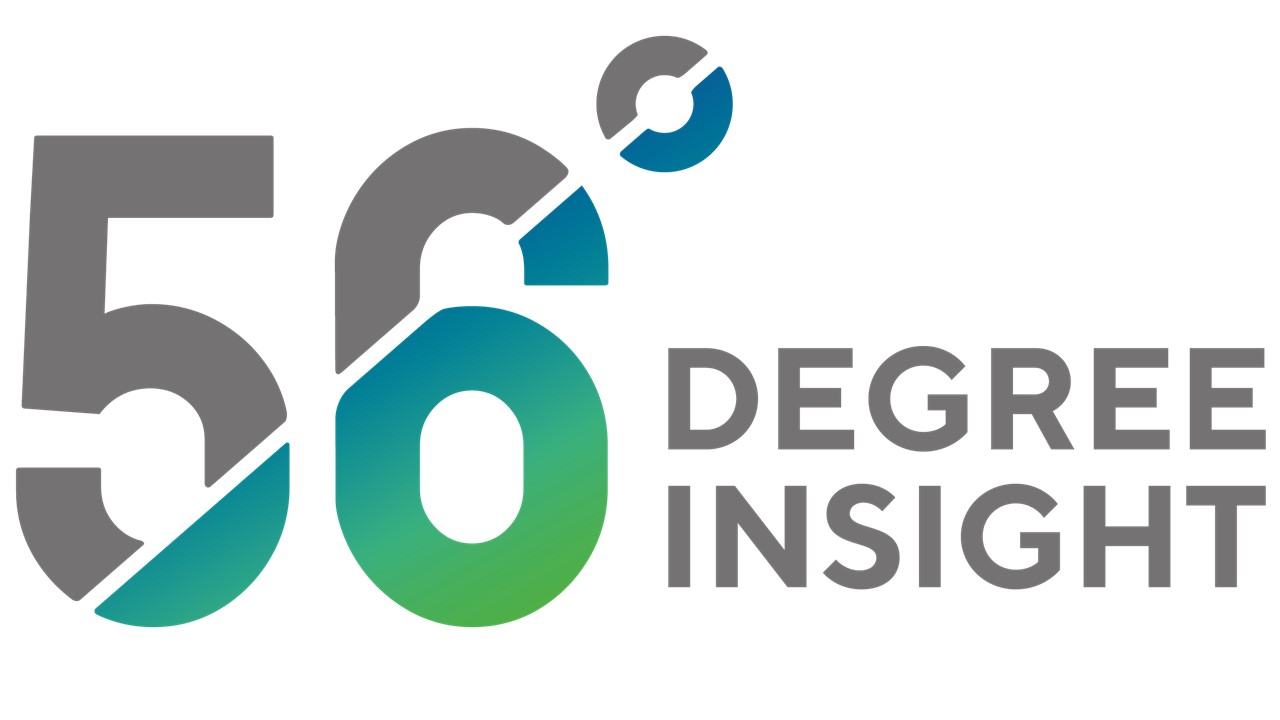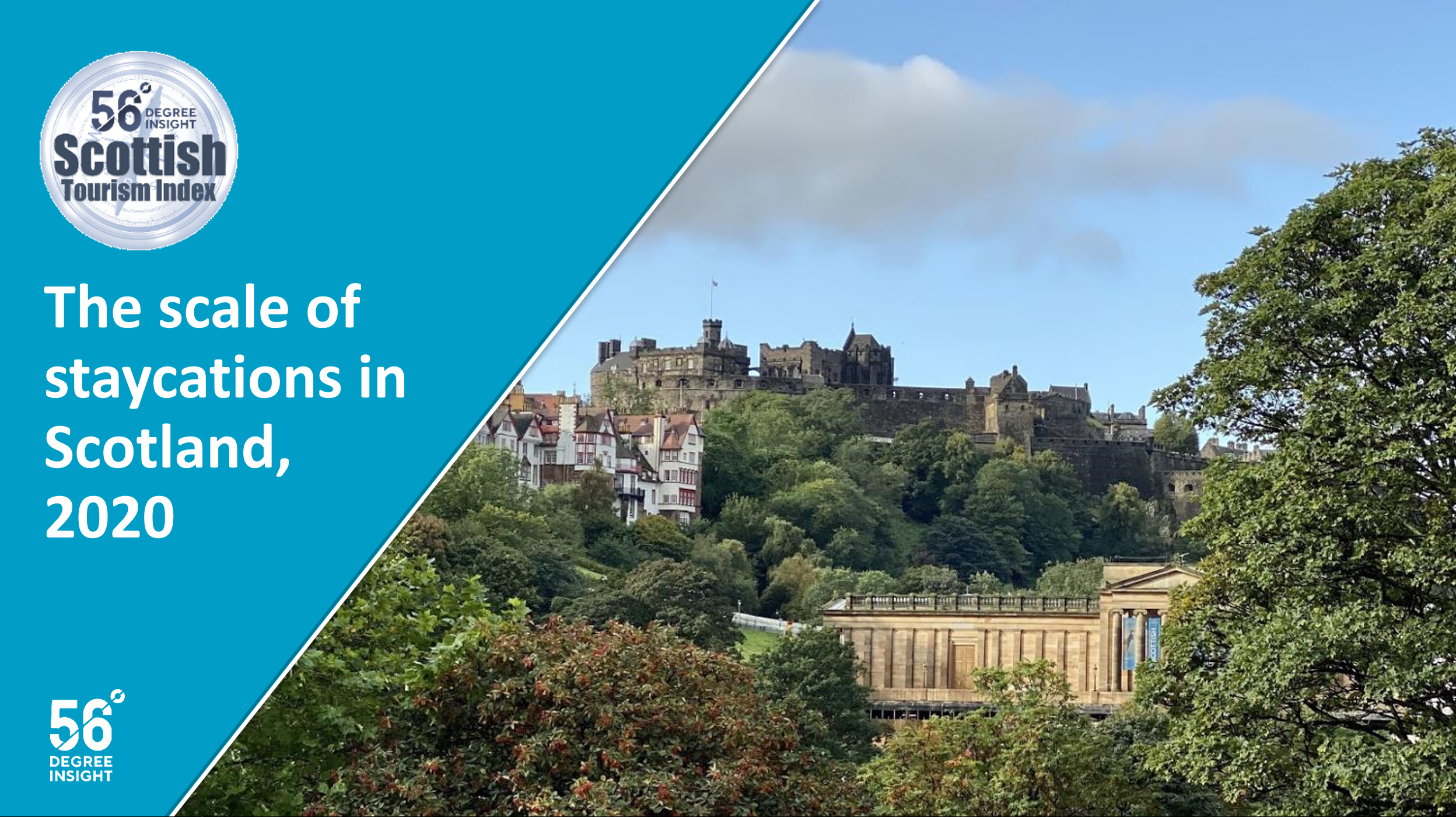The results from wave four of our monthly monitor of how the Scottish population feel about tourism and leisure during the COVID-19 Pandemic
Some six weeks after the Scottish tourism industry re-opened, the results from wave four of our monthly monitor of how the Scottish population feel about tourism and leisure during the COVID-19 Pandemic provide interesting reading…..
COVID-19 lockdown began on 23rd March in Scotland. Gradual re-opening began in late May and the tourism industry re-opened on the 15th July. Over the whole period of lockdown, many of us spent time thinking about how the pandemic had made us feel about travel generally and our 2020 holiday plans in particular – and we, at 56 Degree Insight, were keen to track how the Scottish resident adult population’s views and opinions moved over this period of lockdown and beyond once the tourism industry re-opened.
As a result, in early May, we launched a new survey designed to monitor the tourism and leisure desires and concerns of the Scottish population – The Scottish Tourism Index. Where would they want to go first when conditions allow, and what will they take into account when planning that trip? The first wave of research was undertaken in the first week of May, it was repeated at the start of June and then again in early July – just before re-opening, with holidays a possibility again.
In this fourth and final wave of the Scottish Tourism Index (for now), undertaken in the last week of August, we are able to examine the nature of the holidays taken by Scots ion Scotland in July and August – as well as make more robust predictions about the rest of this year (Global pandemic notwithstanding!). We examine how views about travel generally have evolved since early May and whether the safety measures and mitigations put in place by Scottish tourism and hospitality businesses have been enough to entice Scots to take breaks, and, for those who have, to rate the experience. We also look forward to 2021 – and how Scots feel right now about next year’s holidays. A range of new questions have been included as well as repeats of questions asked 4 weeks previously to identify any emerging trends or changes in attitudes.
The results are presented below from Wave 4, and some key findings have emerged:
Scots are still feeling a sense of nervousness about travel generally in late August:
Nervousness around travel is still considerable with destinations outside Scotland ruled out for the majority. Although three quarters are willing to consider Scotland for holidays, a quarter will not travel at all at the moment.
The financial impacts of COVID-19 are showing signs of increasing with 35% of Scots saying they have been impacted ‘significantly’. This will undoubtedly impact on travel and tourism with less money around to spend on holidays later this year and into 2021 and it is likely to impact behaviours, types of holiday and destination choices.
And the likely changing face of tourism will be exacerbated in 2021 by a clear demonstration that most Scots are unlikely to return to foreign holiday-taking by air next year (60% already ruling it out) – especially older Scots who will undoubtedly be the last group to regain confidence to travel by air following the impacts of COVID-19 this year.
The scale of the Scottish Staycation market is however significant:
The proportion of Scots either considering or having taken a 2020 Scottish holiday by late August remains remarkably consistent to July (53%), however not surprisingly, there has been movement down the holiday purchase funnel. By late August, 13% of Scots had already taken a holiday in Scotland since lockdown, whilst a further 10% had booked and 4% were at the ‘serious planning’ stage. Just over a quarter were only thinking about a Scottish holiday (27%). Again, just under 4 in 10 have no intention of a home holiday this year (38%) however as many as 9% claim to have been undecided but have now rejected a staycation this year. If all of the holidays being considered are eventually taken, around 2.4 million holidays will be taken by Scots in Scotland in 2020. Take-up is highest among families – just ahead of pre-nesters. Empty nesters, traditionally the ‘mainstay’ of domestic tourism are least likely to be considering a Scottish staycation this year – a reflection of the greater fears this groups have around COVID. Therefore, not only is the industry dealing with a much more Scottish-based mix of visitors in 2020, it is also having to adapt to different needs among a younger and more family-oriented audience.
Over half of these potential tourists would not have considered a home holiday if it were not for Coronavirus (51%) – although 3 in 5 of them were still at the ‘consideration stage’ in late August – work is clearly still required to convert them into real bookings.
Throughout each wave of research we have seen that worries around health and safety and financial considerations have been front-of-mind for many Scots when it comes to holidays. This is further illustrated when we look at the 47% of Scots who will not be taking a holiday or break in Scotland this year. Many cited fears around the fact that the virus was still at large and safety concerns as a key deterrent for a home holiday – this was the key barrier for half of them. Price was also a barrier (especially amongst the large proportion who had been impacted significantly by COVID-19) whilst a host of other reasons were also provided. Amongst those who had initially considered a Scottish holiday but had subsequently changed their mind, whilst the presence of the virus was even more significant for this group (62%), a worry about local lockdowns in the wake of the Aberdeen and Coupar Angus outbreaks had undoubtedly deterred a large proportion of this group.
Hygiene and cleanliness top the list amongst potential visitors as the most important factors to be adequately addressed on a Scottish staycation this year – both in the accommodation they use and more generally. Mitigations to aid physical distancing, being able to escape crowds and the behaviour of other tourists were also very important for over half as were considerations around the quality and availability of preferred accommodation. There were subtle variations across lifecycle groups, though broad priorities are consistent.
So, what is the anatomy of the Scottish Staycation in 2020?
Timing: Just under one in five of the planned trips were taken before the schools went back – and by the end of August, a quarter of the predicted holidays had been taken. A further half of the holidays might be expected in September & October, and even with a significant proportion unsure about timings (13%), it is evident that there will only be small numbers of trips after the end of October.
Destinations: The Highlands holds the most appeal for staycations in 2020 with over a third of Scots making this their destination for a staycation. Argyll & the Isles, Perthshire and Ayrshire & Arran are also each likely to be visited by 10%+ of Scots staycationers.
Accommodation: The importance of staying in accommodation offering a degree of safety and independence is reflected in the popularity of self-catering on Scottish holidays in 2020 with 41% staying in this type of accommodation. The popularity of serviced accommodation is lower than would normally be the case and though hotels and guesthouses/B&Bs fill the next few places in the accommodation ‘league table’, much lower levels were reported by those who have already taken their holiday suggesting the predicted numbers for serviced accommodation are unlikely to transpire if anticipated trips do not take place.
Things to Do: In June we discovered that the choice of things to do on holiday suggested a move towards outdoor spaces as opposed to indoor activities. Now that Scots are taking home holidays, this desire is coming through clearly with the natural outdoors (76%), peace and relaxation (73%) and undertaking outdoor pursuits (40%) the main activities.
Eating and Drinking on holiday: throughout the previous waves of this research, a reticence towards eating out on holiday has been evident – with Scots expressing a greater desire to buy food and cook for themselves while on holiday. It is encouraging then to note that almost three in five ate out while on holiday – probably reflecting an increased trust in the safety mitigations as well as the ‘Eat Out to Help Out’ scheme, the timing of which will undoubtedly have aided hospitality businesses during the peak of the summer season.
Satisfaction with the holiday: Satisfaction levels for most elements of the Scottish holiday – amongst those who had already returned from a trip – were fairly high. In particular, around three quarters described themselves very satisfied with the hygiene and cleanliness of their accommodation, the welcome provided by the local population and the quality of their accommodation generally. Encouragingly, when we compare these satisfaction levels with the expectations pre-visit, despite the extremely difficult context, the tourism industry appears to have largely succeeded in delivering experiences that met and often exceeded expectations in 2020. Most elements described as ‘very important’ were matched and occasionally bettered in terms of satisfaction. One area where expectations were not met was in the behaviour of other tourists and visitors to the destination – in this case, the proportion ‘very satisfied’ was some 13 points lower than those describing it as very important.
But how do Scottish communities feel about welcoming tourists to their areas?:
In July, just before the tourism industry re-opened, we were keen to establish how people living in local communities felt about the prospect of the re-opening of tourism and the potential influx of visitors to their communities. We saw a polarisation – and regionalisation of views with those living in the more rural areas the most likely to be negative. This pattern is largely unchanged some 6 weeks on, although there is a slightly more positive balance towards visitors and tourists on the whole than in early July: 41% fairly comfortable as opposed to 33% uncomfortable.
And what are the prospects for 2021?
Scotland remains the most likely destination for most Scots’ holidays in 2021 – around half are either definite or very likely they will take a home holiday and a further 30% are fairly likely they will do so – four in five Scots overall. Other parts of the UK are also likely to benefit from more Scots holidays next year with around two thirds likely to go there. Europe is a probability for just over two in five (44%) and 22% are likely to consider going further afield.
This all does suggest that the impacts of COVID in encouraging more Scots to consider a home holiday in 2020, may continue into 2021. And indeed, when Scots were asked how their likelihood to take a home holiday in 2021 compared with their thoughts pre-Coronavirus, the response is encouraging. A third of Scots are now more likely to consider Scotland for holidays than they were pre-COVID. With 17% now less likely to do so, this represents a swing to staycations (in 2021) of +16%. The swing is greatest amongst families – and also amongst those who would not have considered Scotland this year if it was not for COVID-19.
Perhaps, if nothing else, the virus has forced more Scots to realise the holiday benefits which exist on their own doorstep: the staycation patterns of 2020 show clear potential to carry over into 2021 and beyond.












































